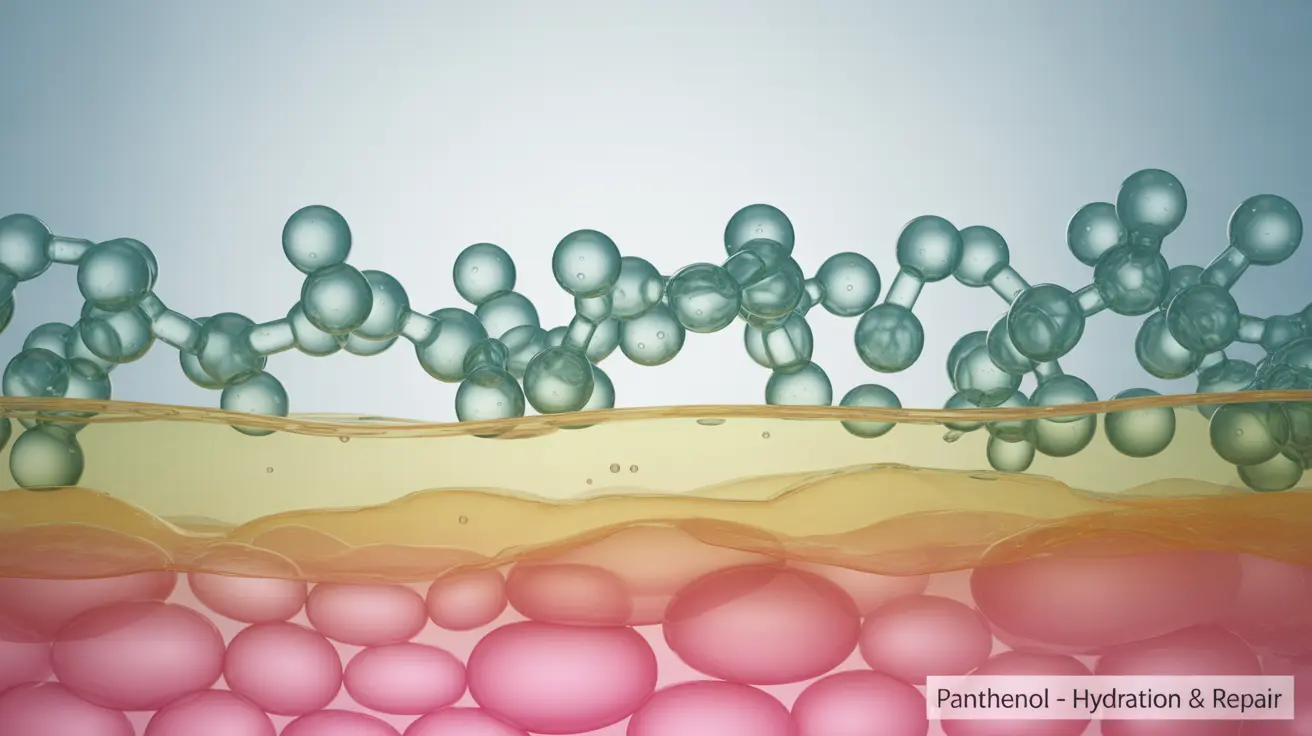Panthenol, also known as provitamin B5, has emerged as a powerhouse ingredient in modern skincare formulations. This versatile compound transforms into pantothenic acid when absorbed by the skin, delivering multiple benefits from deep hydration to enhanced healing properties. Understanding how panthenol works can help you make informed decisions about incorporating it into your skincare routine.
As a key player in the world of dermatological ingredients, panthenol has gained recognition for its ability to improve skin barrier function while providing lasting moisture retention. Its gentle yet effective nature makes it suitable for various skin concerns and types.
Understanding Panthenol and Its Functions
Panthenol is a water-soluble provitamin that converts to vitamin B5 (pantothenic acid) in the skin. This conversion process enables the ingredient to penetrate deeply into the skin layers, where it performs multiple beneficial functions for skin health and appearance.
How Panthenol Works in the Skin
When applied topically, panthenol works by binding to and holding water molecules in the skin. This mechanism helps create a protective barrier that prevents moisture loss while allowing the skin to maintain optimal hydration levels. The ingredient's molecular structure enables it to penetrate multiple skin layers, providing benefits both at the surface and deeper within.
Key Benefits of Panthenol in Skincare
Hydration and Moisture Retention
One of panthenol's primary benefits is its exceptional ability to hydrate the skin. It acts as a humectant, drawing moisture from the environment into the skin. This property helps maintain skin hydration levels and creates a plump, healthy appearance.
Skin Barrier Support
Panthenol strengthens the skin's natural barrier function by promoting the production of lipids and proteins essential for skin health. This enhanced barrier helps protect against environmental stressors and reduces moisture loss, leading to healthier, more resilient skin.
Anti-Inflammatory Properties
The ingredient demonstrates significant anti-inflammatory capabilities, making it particularly beneficial for sensitive or irritated skin conditions. It can help calm redness, soothe discomfort, and support the skin's natural healing processes.
Using Panthenol in Your Skincare Routine
Product Types and Concentrations
Panthenol can be found in various skincare products, including moisturizers, serums, and treatment products. It's typically used in concentrations between 0.5% and 5%, with higher concentrations generally providing more intensive benefits.
Application Guidelines
For optimal results, panthenol-containing products should be applied to clean, slightly damp skin. This helps maximize the ingredient's moisture-binding properties and enhance its effectiveness.
Safety and Compatibility
Panthenol is generally considered safe for all skin types, including sensitive and acne-prone skin. However, as with any skincare ingredient, it's important to perform a patch test before incorporating new products into your routine.
Frequently Asked Questions
What are the main benefits of using panthenol in skincare and how does it improve skin hydration? Panthenol improves skin hydration by acting as a humectant, drawing moisture into the skin and helping to retain it. It converts to pantothenic acid, which enhances the skin's moisture barrier and promotes long-lasting hydration.
Can panthenol help with soothing irritated or sensitive skin conditions like eczema or sunburn? Yes, panthenol has proven anti-inflammatory properties that make it effective for soothing irritated skin conditions. It can help reduce redness, inflammation, and discomfort associated with eczema, sunburn, and other skin sensitivities.
How does panthenol support wound healing and reduce the appearance of scars? Panthenol supports wound healing by stimulating skin cell proliferation and promoting the production of compounds necessary for tissue repair. It helps maintain skin moisture during healing, which can contribute to reduced scarring.
Is panthenol safe for daily use on all skin types, including sensitive and acne-prone skin? Yes, panthenol is generally safe for daily use across all skin types. Its gentle nature and non-comedogenic properties make it suitable for sensitive and acne-prone skin, while still providing effective benefits.
What precautions should I take to avoid allergic reactions or irritation when using products with panthenol? While panthenol allergies are rare, it's important to perform a patch test before using new products. Start with lower concentrations if you have sensitive skin, and discontinue use if any irritation occurs. Always follow product instructions and avoid using multiple high-concentration products simultaneously.




